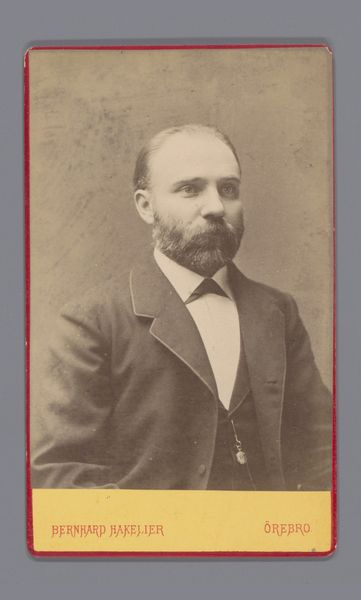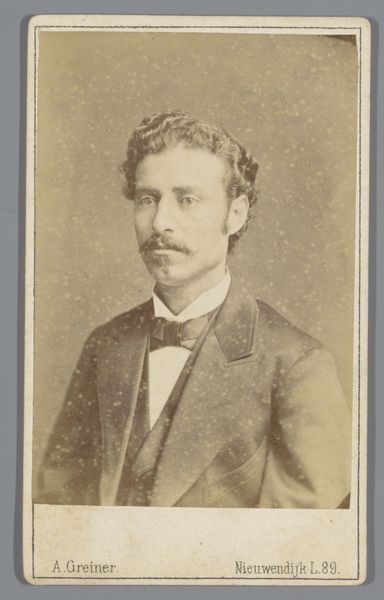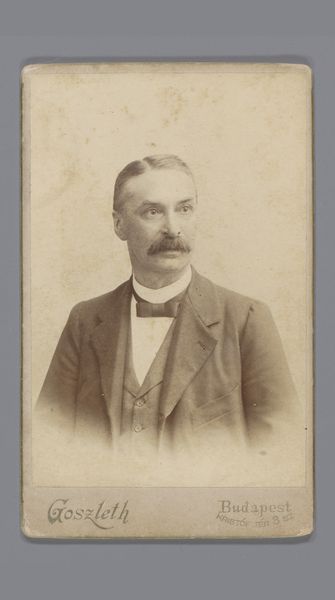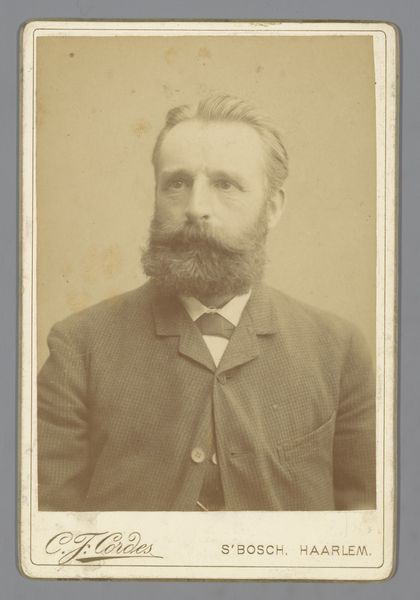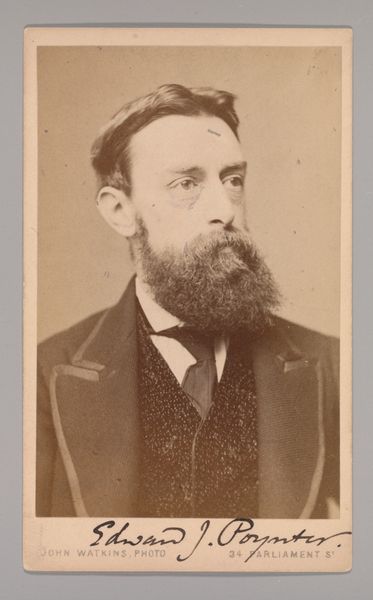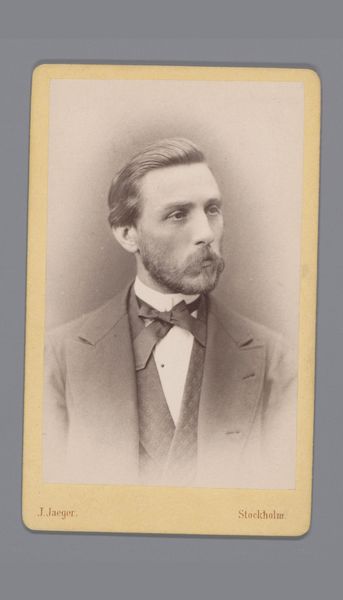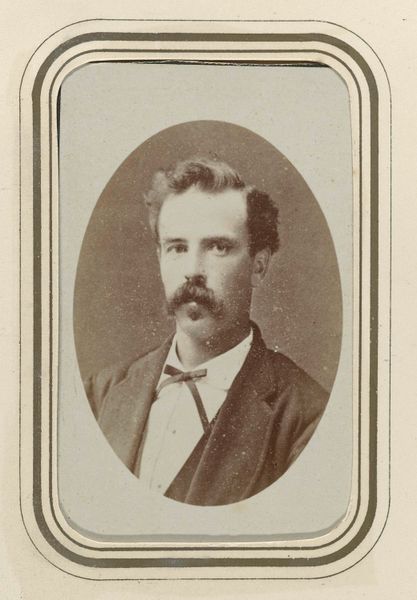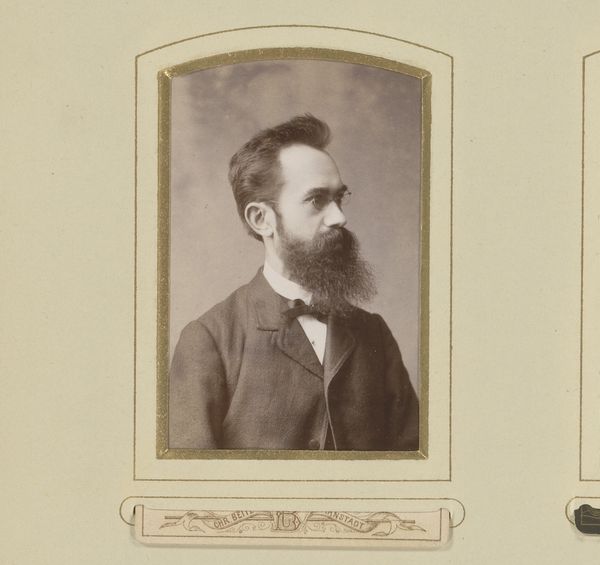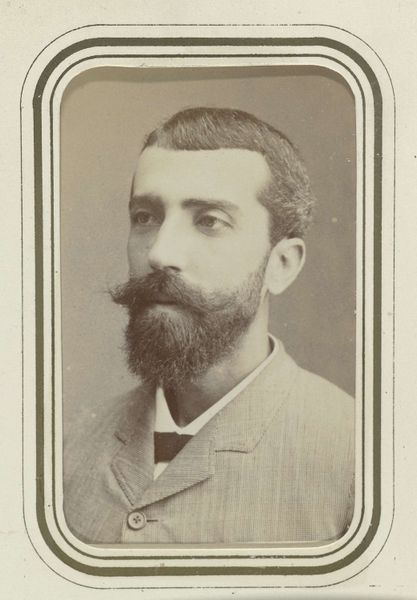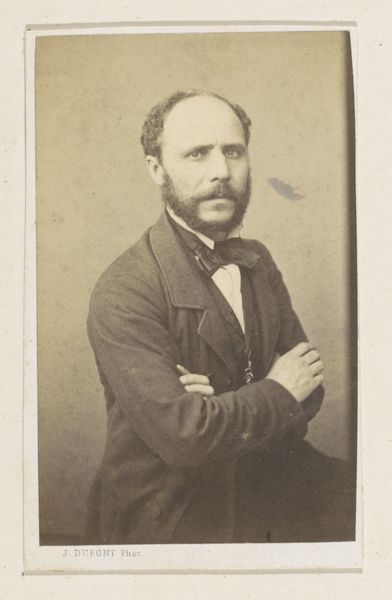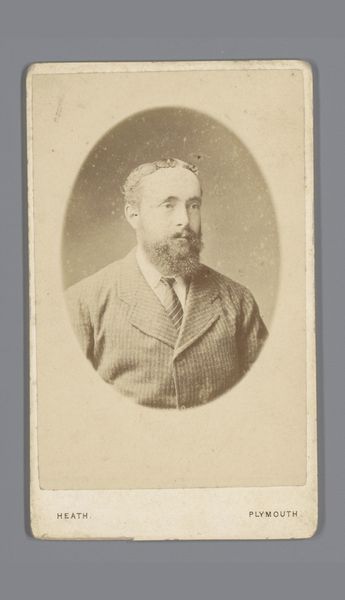
Portret van een onbekende man, aangeduid als Dr. A. M. Wallström 1878 - 1890
0:00
0:00
photography, gelatin-silver-print
#
portrait
#
photography
#
gelatin-silver-print
Dimensions: height 104 mm, width 63 mm
Copyright: Rijks Museum: Open Domain
Curator: Here we have a gelatin-silver print portrait, created by Bernhard Hakelier between 1878 and 1890. The artwork is called "Portret van een onbekende man, aangeduid als Dr. A. M. Wallström"—"Portrait of an unknown man, referred to as Dr. A. M. Wallström". It’s intriguing, isn't it, that he's designated 'unknown' yet possibly identified! I wonder about the tensions embedded in naming, belonging, and historical memory when looking at his image. Editor: Oh, my goodness, look at that beard! He’s giving me serious literary scholar vibes. Kind of brooding, like he's just been asked a question he finds terribly boring but he's far too polite to say it. It feels intimate. Curator: It’s a fascinating example of portraiture in the late 19th century. The very act of commissioning such a photograph tells us something about bourgeois aspirations and identity construction, right? Who gets remembered and why? What power dynamics were at play? How can the representation of Dr. Wallström reflect society norms, the scientific identity or, even the idea of Swedishness itself, as performance? Editor: Absolutely! It’s like he's aware of the performance of being photographed, of creating an image for posterity. You know, there’s this funny formality, but also this almost sly glance in his eye. Was photography already a theatrical medium by this point? And what's up with these highly styled beards back then, I always ask. Was this performative, too? Or what about this tension between public image and something quite internal that is just here. Curator: We can read a lot into it. Considering the proliferation of photography at the time, who chose to have their picture taken? Did it have some impact on our present-day understandings about history? We tend to think that photographs, unlike painted portraits, deliver reliable versions of reality, yet as art history has taught us, nothing is that simple! It can serve as a mirror reflecting our own prejudices and societal structures and power! Editor: The sepia tones certainly add to the atmosphere... like a scene out of a novel. Imagine all the unspoken stories contained within this single image, or the quiet strength present there! If you only knew, Dr. Wallström, how many interpretations will surge as centuries pass. It’s strangely comforting. Curator: Precisely. The photograph becomes a vehicle for broader interrogations about historical narratives and representational practices. It pushes us to think critically about who holds the power to define someone's identity, even across time. Editor: I agree! And it leaves me wondering who Dr. Wallström truly was behind that iconic beard. A little mystery goes a long way, right?
Comments
No comments
Be the first to comment and join the conversation on the ultimate creative platform.

